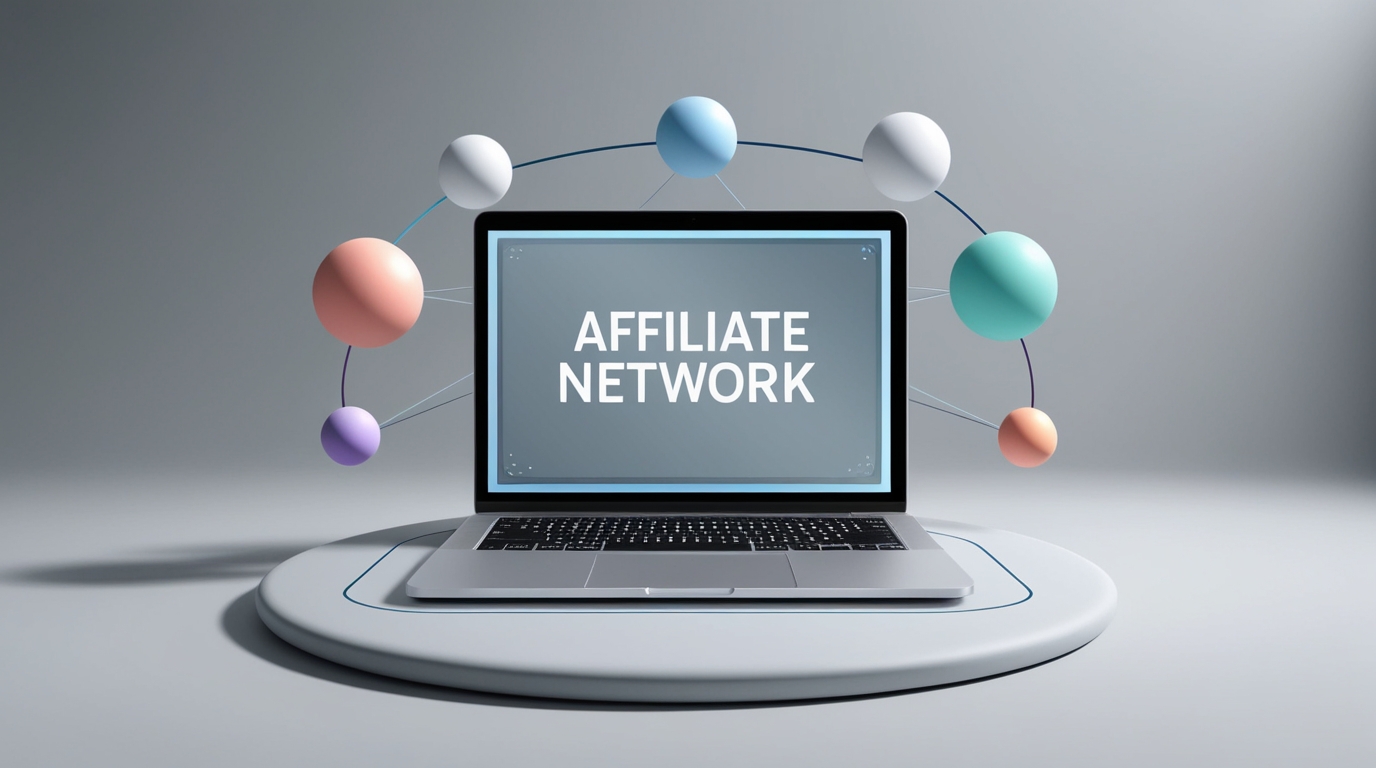Boost Your Business: Mastering Lead Generation

Did you know that 61% of marketers find generating leads their biggest hurdle? This fact underscores the critical role lead generation plays in business expansion today. Mastering this process is essential for not just drawing in potential customers but also for boosting sales and expanding my market reach.
This guide will explore key marketing strategies to revolutionize my lead generation approach. By adopting these methods, I can convert prospects into devoted customers, ensuring my business’s long-term growth. Let’s dive into the transformative power of effective lead generation and uncover actionable strategies to propel my business forward.
Key Takeaways
- Understanding the significance of lead generation for business success.
- Identifying effective marketing strategies for attracting potential customers.
- Exploring the role of social media in generating leads.
- Recognizing common challenges in lead generation and how to overcome them.
- The importance of nurturing leads to foster lasting relationships.
Understanding Lead Generation

Exploring lead generation is essential for grasping its definition and its pivotal role in the sales and marketing landscape. It involves drawing and converting potential customers into those interested in your offerings. This process is vital for building relationships that turn prospects into loyal customers.
What is Lead Generation?
At its core, lead generation uses various strategies and tactics to capture potential clients’ attention. Techniques include online campaigns, social media, and content marketing. The aim is to spark interest and create connections that could lead to sales. Without a deep understanding of lead generation, businesses may find it hard to sustain a steady flow of new customers.
Importance of Lead Generation for Businesses
The significance of lead generation for businesses is immense. It directly impacts revenue growth and customer acquisition. A robust lead pipeline allows for effective nurturing and conversion, boosting sales success rates. Furthermore, investing in lead generation strengthens brand loyalty, fostering lasting connections with customers.
To provide clarity, I’ve assembled a table showcasing key statistics on lead generation:
| Aspect | Statistic |
|---|---|
| Companies using lead generation | 65% |
| Increase in ROI from effective strategies | 50% |
| Time saved through lead generation tools | 30% |
| Businesses attributing sales growth to lead generation | 70% |
Effective Prospecting Techniques

In today’s fast-paced business world, mastering prospecting techniques is essential for effective lead generation. Leveraging social media platforms can significantly enhance my ability to identify and connect with potential leads. These tools provide a wealth of opportunities to engage directly with target audiences and expand my network.
Utilizing Social Media for Prospecting
Social media is not just about sharing content; it can be harnessed as a powerful prospecting tool. Platforms like LinkedIn, Facebook, and Twitter allow me to research potential leads and engage with them meaningfully. Here’s how to effectively use these platforms:
- Craft a strong personal brand by updating my profiles with relevant information and engaging content.
- Join groups related to my industry to connect with like-minded professionals and potential leads.
- Participate in discussions to showcase my expertise and attract prospects.
Networking Strategies that Work
Networking strategies remain a timeless approach to prospecting. Building genuine relationships can lead to valuable connections. Below are effective ways to network:
- Attend industry conferences and events to meet potential clients and partners.
- Follow up with new connections after events to nurture relationships.
- Utilize referral networks by asking satisfied clients for introductions to others who may benefit from my services.
Implementing these techniques can significantly enhance my prospecting efforts. By leveraging social media and innovative networking strategies, I can create a robust pipeline of leads poised to convert into valuable clients.
| Platform | Prospecting Benefit | Effective Strategy |
|---|---|---|
| Professional networking | Join industry-specific groups and actively engage in discussions. | |
| Wider audience reach | Share valuable content and participate in relevant groups. | |
| Real-time engagement | Follow industry leaders and participate in trending topics to raise visibility. |
Sales Funnels: The Path to Conversion
Understanding the sales funnel is crucial for enhancing conversion rates and revenue. This process includes several stages, each aimed at guiding potential customers from awareness to a purchase decision. Grasping the core elements of a successful sales funnel can significantly boost a company’s lead generation efforts.
Elements of a Successful Sales Funnel
A successful sales funnel is built on several critical elements. These stages are key:
- Awareness: The initial stage where potential customers discover your brand.
- Interest: Engaging prospects with valuable content and insights.
- Decision: Offering detailed information to aid in informed choices.
- Action: Encouraging final steps towards a purchase.
How to Optimize Your Sales Funnel
To boost conversion rates, effective optimization strategies at each sales funnel stage are vital. Here’s how to optimize:
- Analyze customer behavior to pinpoint drop-off points.
- Refine targeting by segmenting your audience based on interests and needs.
- Enhance your content to resonate with potential customers.
- A/B test various elements to discover the most effective combinations.
By focusing on these core components and employing solid optimization strategies, I can effectively enhance my sales funnel. This leads to increased conversion rates and greater business success.
| Sales Funnel Stage | Key Focus | Optimization Strategy |
|---|---|---|
| Awareness | Brand visibility | Targeted advertising |
| Interest | Engagement | High-quality content marketing |
| Decision | Informed choices | Detailed product information |
| Action | Purchase | Clear call-to-action |
Lead Nurturing: Building Relationships
Effective lead nurturing is key to building strong relationships with potential customers. By crafting a detailed lead nurturing strategy, I can forge a deep connection that enhances the customer experience. This approach includes several essential elements. These elements ensure personalized communication, offer valuable content, and foster ongoing engagement.
Developing a Lead Nurturing Strategy
To set up a successful lead nurturing strategy, I must first grasp the specific needs and preferences of my target audience. This involves employing several techniques:
- Segmenting leads: By categorizing leads, I can tailor my communication more effectively.
- Creating personalized content: Offering relevant information keeps leads interested and shows I understand their needs.
- Automating follow-ups: Email automation tools ensure my messages reach leads at the best times.
Tools and Techniques for Effective Nurturing
With the right tools, I can refine my lead nurturing process and improve interaction. Below is a table detailing some effective tools and techniques for lead nurturing:
| Tool/Technique | Description | Benefits |
|---|---|---|
| Email Marketing Software | Platforms like Mailchimp enable personalized email campaigns. | Boosts engagement and increases conversions. |
| Customer Relationship Management (CRM) | CRM systems track interactions and manage relationships effectively. | Improves efficiency in nurturing leads. |
| Social Media Engagement | Platforms such as LinkedIn help connect with leads. | Builds relationships and raises brand visibility. |
| Content Marketing | Sharing informative articles or resources relevant to the audience. | Establishes authority and builds trust. |
Incorporating Inbound Marketing Strategies
Integrating inbound marketing strategies can significantly enhance lead generation efforts. By focusing on creating valuable content, businesses can effectively attract potential customers. This approach emphasizes the need to address the specific needs and challenges faced by the target audience. As I explore the following strategies, I will highlight how both content creation and search engine optimization play pivotal roles in attracting leads and driving organic growth.
Creating Valuable Content
Valuable content is essential in inbound marketing. Through informative blog posts, engaging videos, and interactive infographics, you can connect with your audience meaningfully. Here are key elements to focus on:
- Understand Your Audience: Research what your target audience is interested in. Use surveys and social media insights to gather data.
- Offer Solutions: Create content that addresses common pain points. Providing answers to questions helps establish trust.
- Consistency is Key: Regularly update your content to keep it fresh and relevant. A content calendar can help.
Leveraging SEO for Lead Generation
Search engine optimization is vital in increasing your content’s visibility. Implementing effective SEO strategies ensures that your content reaches the right audience. Consider these techniques:
- Keyword Research: Identify relevant keywords potential customers are searching for and incorporate them naturally into your content.
- On-Page SEO: Optimize title tags, meta descriptions, and headers to enhance your content’s search engine ranking.
- Link Building: Promote your content through guest blogging and partnerships to increase its authority and visibility.
Lead Scoring: Prioritizing Your Efforts
Lead scoring is crucial for sales teams aiming to optimize their resources. It’s a systematic way to rank prospects by their engagement levels and conversion potential. This approach helps me focus on the most promising leads, ensuring I allocate my efforts wisely. By leveraging lead scoring, I can significantly boost my prioritization and drive sales benefits.
What is Lead Scoring?
Lead scoring assigns numerical values to prospects based on their behavior, demographics, and brand interactions. This method provides a clear view of which leads to focus on, optimizing my time and effort. By tracking website visits, email opens, and social media interactions, I gain insight into each lead’s readiness to buy.
Benefits of Lead Scoring in Sales
Adopting lead scoring enhances my sales efficiency and effectiveness. The main advantages include:
- Improved Efficiency: I can concentrate on high-potential leads, saving time on less promising ones.
- Streamlined Follow-Ups: Lead scoring makes follow-ups strategic and effective, improving engagement.
- Higher Conversion Rates: Focusing on interested leads boosts my conversion rates, leading to increased revenue.
Lead Qualification: Finding the Right Fit
Lead qualification is vital for focusing on leads with high potential. By using effective strategies to assess and prioritize leads, I boost my conversion chances. This section will delve into key techniques for lead qualification and common mistakes to avoid for success.
Qualifying Leads through Effective Strategies
To effectively qualify leads, I evaluate their readiness to purchase using various criteria. Some effective strategies include:
- Assessing demographic information to determine alignment with my target market.
- Analyzing behavioral data, such as engagement levels with my content or previous interactions.
- Implementing a scoring system to prioritize leads based on their potential value.
By applying these strategies, I can better identify leads likely to convert into customers.
Common Mistakes to Avoid in Lead Qualification
In my lead qualification journey, I’ve learned to avoid several common mistakes. Recognizing these pitfalls helps streamline my process:
- Ignoring lead scoring: Not using a structured scoring system can waste time on low-potential leads.
- Overlooking follow-ups: Not regularly following up with leads can result in missed opportunities to engage and convert.
- Neglecting feedback: Not gathering insights from past conversions can hinder the improvement of future lead qualification processes.
Avoiding these mistakes can improve my lead qualification efforts and sales outcomes.
| Lead Qualification Criteria | Effective Strategies | Common Mistakes |
|---|---|---|
| Demographic Alignment | Analyze age, location, and profession | Ignoring demographic data |
| Behavioral Engagement | Monitor interactions with content | Failing to track engagement metrics |
| Follow-Up Actions | Regular call and email follow-ups | Neglecting follow-ups with leads |
Email Marketing: An Essential Tool
Email marketing is vital for my lead generation strategy. It enables direct communication with potential clients, fostering lasting relationships. The secret to success lies in developing effective strategies for email list building and campaign engagement.
Building an Email List for Lead Generation
Starting with a targeted email list is crucial for email marketing success. I attract the right audience by employing various tactics to collect email addresses. These include:
- Offering valuable content: E-books, whitepapers, and exclusive offers can entice visitors to subscribe.
- Embedding signup forms: Strategically placing forms on my website ensures easy access for potential subscribers.
- Utilizing social media: Promoting my email list on platforms like Facebook and Instagram helps reach wider audiences.
Crafting Engaging Email Campaigns
After building my email list, I focus on creating engaging campaigns. Personalization is crucial; addressing recipients by name boosts open rates. I also ensure the content is relevant and valuable. Here are some strategies I use:
- Compelling subject lines: A catchy subject line can significantly increase opens.
- Clear and concise messaging: I deliver my message quickly and effectively, avoiding lengthy paragraphs.
- Call to action: Including persuasive CTAs encourages readers to take the next step, whether that’s visiting my website or making a purchase.
By using these tactics, I ensure my email marketing is effective. It helps in building email lists and crafting campaigns that engage my audience and drive lead generation success.
Conclusion
In concluding our discussion on lead generation strategies, it’s essential to highlight the key elements that drive business success. Understanding the importance of a robust sales funnel and the strength of email marketing is crucial. Each element plays a vital role in drawing in and developing potential leads. Through exploring various techniques, it’s evident that a comprehensive approach is vital for businesses aiming to excel in today’s competitive world.
Adopting the strategies and techniques discussed will significantly improve your lead generation efforts. Whether you’re using social media or enhancing your lead qualification methods, the potential to boost conversions is vast. My final thoughts underscore the dynamic nature of lead generation; it demands continuous adaptation and innovation in marketing to remain competitive.
By embracing these insights, you’ll not only enhance your lead generation efforts but also set the stage for sustained growth and success. Let’s remain informed and proactive in our strategies, ensuring we adapt to the evolving needs of our audiences with confidence.
FAQ
What is lead generation?
Lead generation is the process of attracting and converting potential customers into individuals interested in your offerings. It’s essential for business growth and boosting sales.
Why is lead qualification important?
Lead qualification ensures businesses focus on leads with high potential. By evaluating leads against specific criteria, companies can allocate resources more effectively. This approach improves conversion rates and maximizes return on investment.
How can I effectively nurture leads?
Effective lead nurturing involves personalized communication and providing valuable content. Engaging with leads throughout their journey is crucial. Tools like email marketing and automation software can help streamline this process.
What strategies can improve my sales funnel?
Optimizing your sales funnel requires understanding the customer journey from awareness to purchase. Key strategies include analyzing customer behavior, tailoring content to their needs, and using A/B testing to enhance conversion rates.
How does inbound marketing relate to lead generation?
Inbound marketing attracts leads by offering valuable content that addresses their needs. This approach supports lead generation by increasing visibility and engagement across various channels.
What is lead scoring and why is it beneficial?
Lead scoring ranks prospects based on their engagement and conversion likelihood. It prioritizes sales efforts, enhances efficiency, and tailors follow-up strategies to meet potential customers’ needs.
What email marketing techniques should I use for lead generation?
For effective email marketing, build targeted lists, create engaging content, and use segmentation. These strategies can significantly boost engagement and conversion rates for lead generation.
How can I use social media for prospecting?
Social media platforms like LinkedIn and Twitter are great for prospecting. Share valuable content, engage with followers, and network in industry groups to identify and connect with potential leads.
What common mistakes should I avoid during lead qualification?
Avoid common lead qualification mistakes such as not defining clear criteria, inconsistent follow-ups, and overlooking data analysis. These errors can lead to less effective and less efficient qualification processes.


